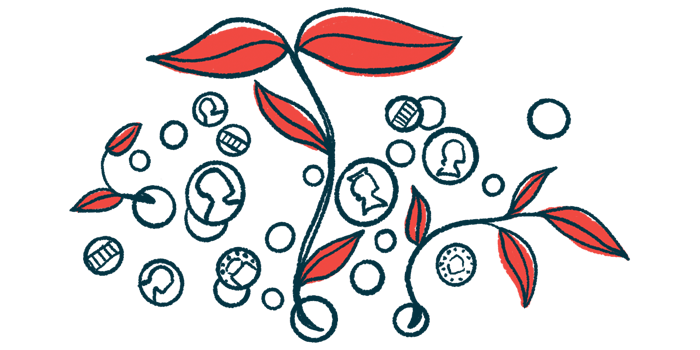Study to Understand Gene Therapy Limitations Backed by $12M Grant

A multi-institute research collaboration has received a $12 million grant from the National Heart Lung and Blood Institute to understand what’s behind limitations in gene therapies currently being tested in people with hemophilia A.
The goal is to use this information to develop safer and long-lasting gene therapies for the disease.
The project, titled “Toward Safer Gene Therapy for Hemophilia A,” will be led by Roland Herzog, PhD, a professor of pediatrics, the Riley Children’s Foundation professor of immunology, and the director of the gene and cell therapy program at Indiana University School of Medicine.
The standard treatment for hemophilia A is replacement therapy, which supplies patients with the factor VIII (FVIII) blood clotting protein they are missing to prevent or treat bleeds. This approach often requires patients to receive regular infusions for the rest of their lives.
By delivering to cells a healthy version of the F8 gene, which provides instructions to produce FVIII, gene therapy has the potential to be a long-term therapeutic approach, or even a cure, for hemophilia A.
Several gene therapies are currently being tested in clinical trials, including Phase 3 studies. Most use a modified and harmless adeno-associated virus (AAV) to carry and deliver the modified gene to liver cells, the body’s main producers of clotting factors.
Viral-based therapies can only be given one time due to the body’s natural immune response against the viral carrier, which would be enhanced in subsequent exposures.
A single gene therapy dose can still promote immune responses against it, which may not only cause liver damage, but also limit its effectiveness. As such, patients are recommended to start an immunosuppressive treatment regimen shortly before receiving gene therapy.
“Several companies have taken [gene therapy] forward into clinical trials, and in some of these trials, the patients initially looked like they were cured. But what they all have in common is that they need to deliver a lot of the virus in order to get the desired results, and over time clotting factor levels started to decline,” Herzog said in a university press release.
In addition, patients also experienced prolonged mild liver damage, despite immunosuppressive treatment during the first year of gene therapy.
While these findings have raised questions about how safe and durable this type of approach is, what are causing these limitations remain unknown, preventing them from being corrected.
“This is an incredibly significant and urgent medical question, and it requires the synergy of multiple groups with different expertise to come together and solve a problem that they wouldn’t be able to solve on their own,” Herzog said.
Herzog and his colleagues believe that several features of AVV and FVIII biology are driving the safety concerns that are being reported and limiting the durability of FVIII production to therapeutic levels.
The awarded project, which is divided into three separate studies, will combine expertise in AVV and FVIII biology, cellular stress responses, and immunology.
The first study, “Overcoming FVIII protein misfolding and cell toxicity,” will be led by Randal J. Kaufman, PhD, the director of the degenerative diseases program at the Sanford Burnham Prebys Center for Genetic Disorders and Aging Research.
It will study cellular toxicity and stress that can be triggered by producing FVIII, which is prone to misfolding, aggregation, and retention in the endoplasmic reticulum, a cellular organelle involved in protein production, modification, and transport.
Previous research showed that highly increased FVIII production leads to toxic FVIII clumps forming in the endoplasmic reticulum, cellular stress and inflammatory responses, and the development of liver cancer.
Researchers will evaluate these processes, as well as whether producing new FVIII versions that fold more efficiently and are released more easily into the bloodstream could be better gene therapy options.
The second study, “Biology of Subgenomic AAV Vector Particles,” will study how AAV production methods unintentionally result in molecules that may promote cellular damage or cancer.
The goal is to also develop strategies to reduce or eliminate these toxic molecules from forming.
The study will be led by Weidong Xiao, PhD, professor of pediatrics at Indiana University School of Medicine, with major contributions from Indiana University researchers Junping Zhang, PhD, and Anh Lam, PhD.
Herzog and Ype de Jong, MD, PhD, an assistant professor of medicine at the Sanford I. Weill Medical College at Cornell University, will jointly lead the third study, titled “Mechanisms of Innate and Adaptive Immune Responses to AAV-FVIII Gene Transfer.”
Researchers will analyze the innate and adaptive immune responses triggered by AAV-based gene therapy for hemophilia A, as well as their role in the gradual loss of FVIII production. The innate immune system is the body’s first line of defense and is made of cells people are born with, while the adaptive immune system is acquired through exposure to a given microbe or molecule.
Data from all three interconnected studies are expected to aid the design of viral vectors and protocols, resulting in safer, more effective, and durable gene therapies.
“My hope is that our studies will help the field as a whole move toward curing hemophilia A,” Herzog said.
To support the project, the grant will also fund a core that generates human liver cells and a core that manufactures gene therapy viral carriers and analyzes them on a molecular level.
Researchers involved in the project will receive regular counsel from an internal and external scientific advisory board.







